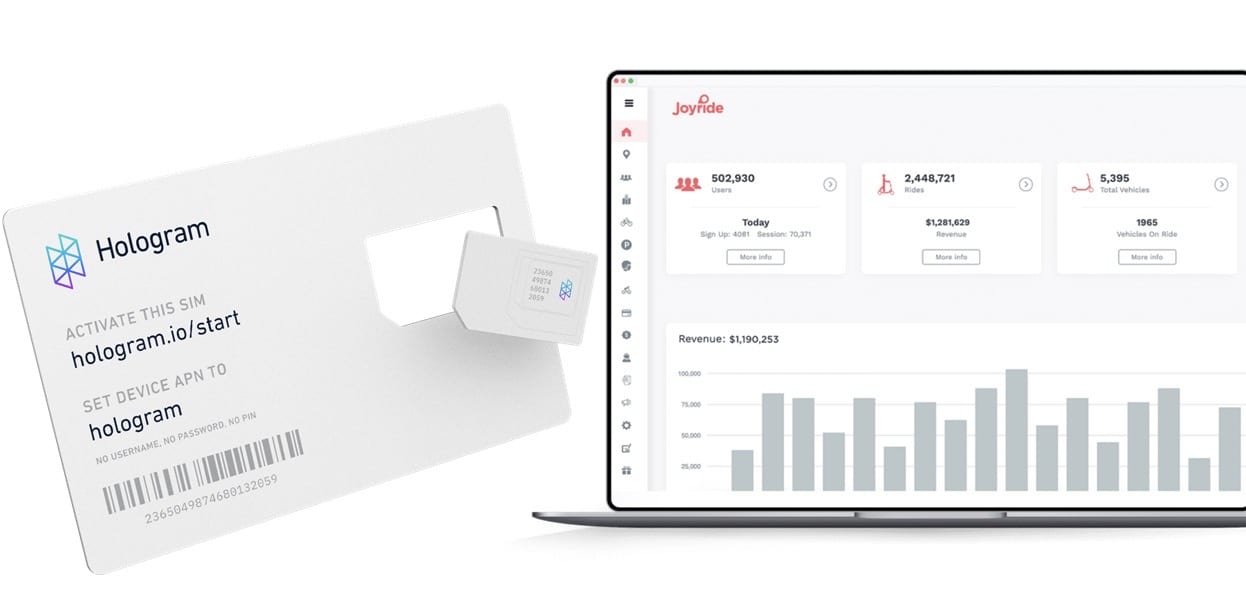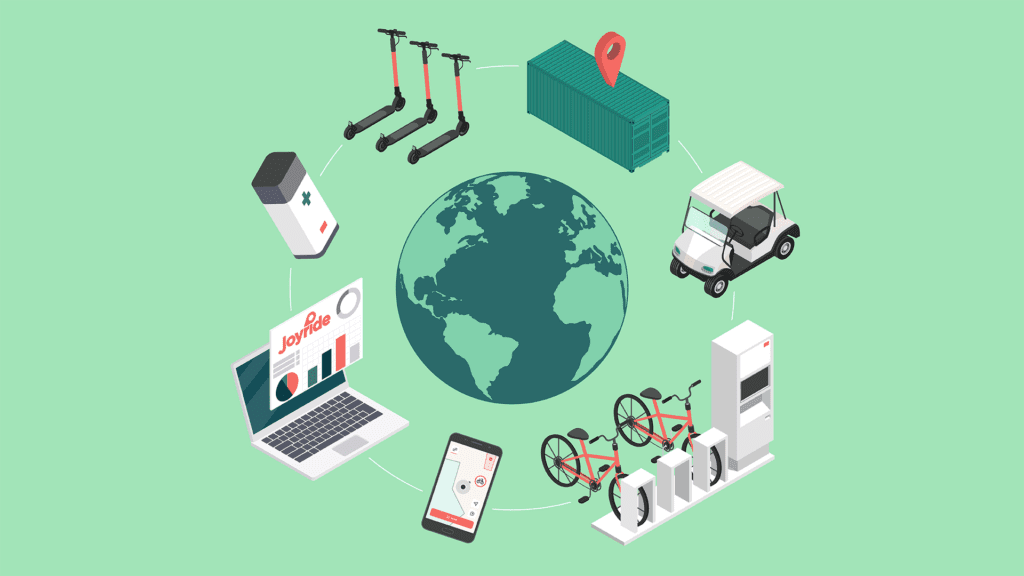It’s become clear that micromobility is among a select sect of industries to experience transformative growth as a result of the pandemic. As demand for shared mobility vehicles like electric scooters and e-bikes has risen exponentially, so too has the need for IoT-powered solutions. Just look at Hologram. The Chicago-based startup is a cellular platform for the Internet of Things, and it has seen its device usage increase by 150% since last September.
The jump in Hologram’s demand is stemming from micromobility, contact tracing and social distancing solutions, all of which rely on cellular IoT. While Joyride software enables shared mobility operators through a white-label user app and backend dashboard management, vehicles themselves can only connect to our platform via cellular connectivity, which is where a location-agnostic partnering service like Hologram comes into play. What’s also aligned is Joyride and Hologram’s approach to giving micromobility businesses the tools they need to launch as quickly and efficiently as possible. Telling us more about how IoT innovation is arising as a result of current conditions, and where the industry is going next, is Hologram’s VP of Revenue, Derrick Wolbert.
How does Hologram work, and where does software factor in?
At a base level, we connect IoT devices to the internet—everything from smart homes to autonomous vehicles and industrial apps. In the micromobility space, vehicles must have connectivity at all times in order to know where they are, and they must be able to toggle between internet carriers no matter their location. Hologram currently connects with 550 network partners across 180 countries through one single SIM card that’s installed in electric scooters and e-bikes during manufacturing (or added by a technician to preexisting vehicles). Essentially, if you manufacture a scooter in China and then turn it on in the U.S. for the first time, how does it talk to Joyride software? How does data related to GPS, for instance, travel to Joyride’s central dashboard and then to micromobility operators? It’s conducted through our cellular IoT connection.

How does Hologram fit into the micromobility supply chain?
We partner with the world’s fastest-growing IoT companies, docking stations, micromobility hardware manufacturers and software providers like Joyride—those who we feel are equally passionate about getting companies up and running quickly and seamlessly. That’s why we recently launched a product called Hyper, which provides automatic over-the-air updates of SIM profiles, so there’s no interruption to carrier connection for any vehicle or rider. The focus for everyone should be about future-proofing devices. Cellular networks change, and you have hardware that needs the flexibility to adapt with it.
How has the pandemic impacted Hologram and mobility at large?
When COVID-19 initially hit, we saw businesses take scooters from one market and move them to another. We released Hyper over the summer to allow them to do exactly that without manual updates. We have shipped more than 80,000 Hyper-enabled SIM cards since the product was released, and are continuing to see significant demand for this functionality. As cities are reopening and people are seeking other solutions to mass public transportation, we’re seeing first-hand how scooters and e-bikes have become crucial. The shared mobility industry is going to see compounded growth year over year, and the hardware, software and IoT supply chain will be innovating alongside this rise. It helps that municipalities are on board the micromobility movement. Really, there’s been a flipped perception of micromobility being a nuisance to actually becoming a vital component of city life.
Another area that’s really expanding its IoT growth is the smart RV industry. People are road-tripping instead of flying, and for those driving an RV for the first time, you need a system that’s connected 24/7 and able to tell you if you’re going too hard or too fast.
Any particular markets showing signs of growth in IoT connectivity?
Latin America is growing considerably for us, especially Brazil. There are regulatory provisions that state all SIM cards must originate in Brazil, so we’ve adhered and developed a localized solution and have multi-carrier deals in place with the country’s top four internet providers. It’s a critical move, because Brazil’s cellular landscape is very fragmented. Tying it all together in one SIM card is a seamless solution, especially as shared mobility systems continue to take off in the region.
What’s next in IoT innovation as it relates to scooters and e-bikes?
I would be prepared to see more machine learning and AI to help manage fleets. Software is already highly sophisticated, and is used to notify operators about all the components that need checking on a vehicle. But we’re going to see much more integration across providers to offer all the meta-data available. Hologram has a lot of data about a scooter’s physical connection with the cloud and network performance. We see the issues before the carrier even sees them. Through more partnerships like ours with Joyride, we can help troubleshoot issues instantly for operators ranging in all sizes—from fleets of 10 vehicles to several hundred thousand. We play in connectivity, and our customers need a platform like Joyride to enable the software portion. When innovation continues to happen independently and across all parties involved, the industry as a whole benefits.
While Joyride software is location and hardware-agnostic, we still pride ourselves on striking longstanding partnerships with the industry’s leading providers. To learn more about how Joyride software connects with Hologram, as well as other areas of the micromoblity stack, contact our sales team for a demo here.






